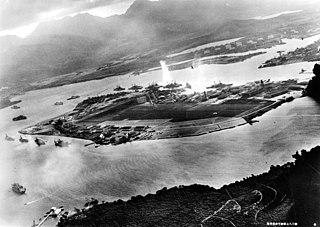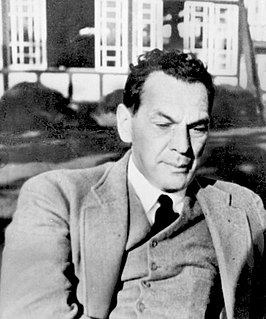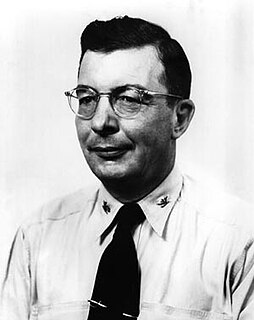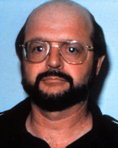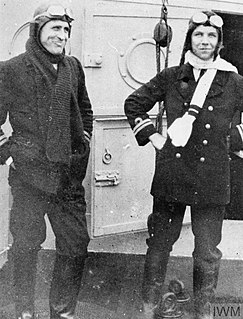
Bernard Julius Otto Kuehn (sometimes referred to as Kuhn) was a sleeper agent in the employ of the Abwehr for Nazi Germany who had close ties to Propaganda Minister Joseph Goebbels. [1] In 1935, Goebbels offered Kuehn a job working for Japanese intelligence in Hawaii; he accepted and moved his family to Honolulu on August 15, 1935. The family included Dr. Kuhn, a pleasant scholarly[ weasel words ] man of 41; his wife, Friedel; a daughter, Susie Ruth (at 17, she was the former mistress of Goebbels); [1] and her two half-brothers, Hans Joachim, and Eberhard.
A sleeper agent is a spy who is placed in a target country or organization not to undertake an immediate mission but to act as a potential asset if activated. Even if unactivated, the "sleeper agent" is still an asset and is still playing an active role in sedition, treason or espionage by virtue of agreeing to act if activated. Sleeper agents are popular plot devices in fiction, particularly in espionage fiction and science fiction. This common use in fiction is directly related to and results from repeated instances of real-life "sleeper agents" participating in spying, espionage, sedition, treason, and assassinations.
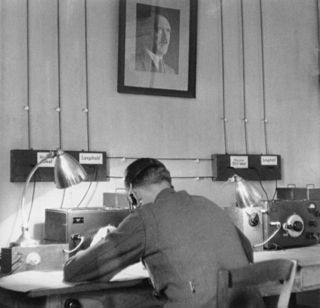
The Abwehr was the German military intelligence service for the Reichswehr and Wehrmacht from 1920 to 1945. Despite the fact that the Treaty of Versailles prohibited the Germans altogether from establishing an intelligence organization of their own, they formed an espionage group in 1920 within the Ministry of Defense, calling it the Abwehr. The initial purpose of the Abwehr was defense against foreign espionage—an organizational role which later evolved considerably. Under General Kurt von Schleicher the individual military services' intelligence units were combined and, in 1929, centralized under his Ministry of Defense, forming the foundation for the more commonly understood manifestation of the Abwehr.

Nazi Germany is the common English name for Germany between 1933 and 1945, when Adolf Hitler and his Nazi Party (NSDAP) controlled the country through a dictatorship. Under Hitler's rule, Germany was transformed into a totalitarian state that controlled nearly all aspects of life via the Gleichschaltung legal process. The official name of the state was Deutsches Reich until 1943 and Großdeutsches Reich from 1943 to 1945. Nazi Germany is also known as the Third Reich, meaning "Third Realm" or "Third Empire", the first two being the Holy Roman Empire (800–1806) and the German Empire (1871–1918). The Nazi regime ended after the Allies defeated Germany in May 1945, ending World War II in Europe.
His daughter dated U.S. military personnel and opened a beauty parlor that offered the best and cheapest services in the city. Wives of high-ranking military personnel would spend hours gossiping about the coming and going of their husbands and boyfriends. "They talked so much," she would later say, "that it was a relief when they left the place". [1]
Bernard Kuehn's son, Hans Joachim Kuehn was only 11 years old when he was trained by his father to ask precise questions about the ships and submarines. Young Hans was also trained to notice some critical areas on those ships and submarines. Every morning, Bernard would dress up young Hans as a U.S. Navy sailor to show their patriotism, and they would both go walk along the waterfront. The Officers would invite Hans into the ships and submarines and that's when Hans would start spying. [1]
His wife's job was to record all intelligence that the family obtained.
When Japanese master spy Takeo Yoshikawa arrived in Honolulu, Dr. Kuhn would flash coded messages from the attic of the Kuhn household—a system that went undetected until the end.
Takeo Yoshikawa was a Japanese spy in Hawaii before the attack on Pearl Harbor on December 7, 1941.
Bernard Kuehn would send coded messages to Japanese consulates. A Japanese agent claimed that Bernard lacked spying skill and was not made for the job offered by Goebbels. He would engage in his spying activities even when he had a risk of getting caught. The information received by the Japanese was not of great value. [1] [2]
The day of the attack, December 7, 1941, while the Kuehns were watching the carnage, they were still sending coded information to the Japanese army from their cottage that overlooked Pearl Harbor. Although the information sent to Japan were not very valuable, the Kuehns went unnoticed by the Americans until the day of the attack. While still sending the messages, there was a flashing light that was showing from the Kuehn's lodge. This triggered an alert in the eyes of the military intelligence. [1]
The family lived the good life on Japanese pay, but soon came to the attention of the FBI as a possible suspect because of his Nazi connections and lack of any source of income. [3] After the Attack on Pearl Harbor, he was arrested and on February 21, 1942, he was sentenced by a military commission to be shot "by musketry" as a spy. [4]
After volunteering valuable information about the Japanese and German spy networks, his sentence was commuted to 50 years' hard labor but after the war he was deported to Germany. His daughter and wife also served time in prison and both went back to Germany on their release.
Dr. Bernhard L. Hormann, the head of the sociology department at the University of Hawaii, kept a collection of the Kuehn family papers including the correspondences they wrote to one another during and after their internment on Sand Island (Hawaiian Island Detention Camp). Dr. Hormann's family provided a home for Hans Joachim Kuehn during his parents' incarceration and subsequent sentence. His entire collection was donated to the university archives. [5]

